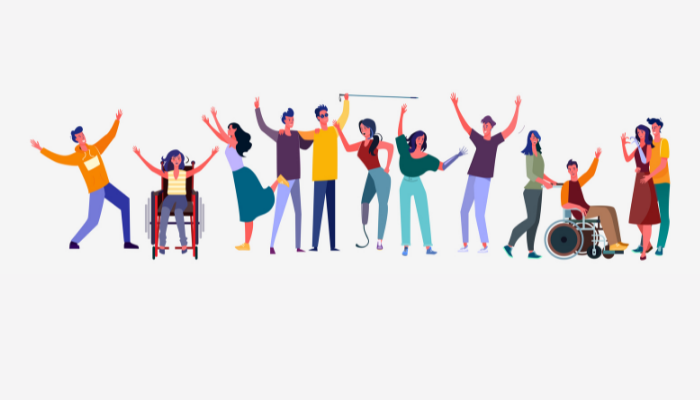The Impact of the Pandemic on People with Disabilities
The debates about the future of work have been around for a while. The pandemic has changed almost every aspect of how businesses used to function. People who were used to doing their work have also changed in these twenty or so months. And these changes and the discussions around them are having a massive impact on how companies plan their remote working policies and return-to-work plans. Almost every person has witnessed uncertainty surrounding their jobs; however, people with disabilities have seen their job prospects dwindle as no other person has during this period. And this is why it is time that employers, HRs, and others involved in the hiring and retention processes make space for people with disabilities in their discussions over the future of work.
The Need for Change in Hiring Practices
The statistics don’t lie, and if they are anything to go by, the future could see more people with disabilities losing their jobs and finding it hard to land a good enough job for themselves. The worst kept secret ever is that most, if not all, companies prefer people without disabilities. However, this needs to change. Whether it is due to lack of education or right skills or discriminatory hiring practices, employers need to make sure that they provide better opportunities to people with disabilities and make hiring and retaining them a part of their diversity and inclusion initiatives.
Reconsidering the Workplace Structure for People with Disabilities
More and more organizations are planning to open their office doors to welcome back employees after a long hiatus. This is an opportunity for people with disabilities and their advocates to make companies reconsider their structure so that they easily accommodate those with disabilities.
Although people with disabilities have been continuously denied a remote working alternative, it is now time for employers to make up for it and give employees with disabilities the option to work from home for as long as they want, provided there is no compromise in productivity. Employers should offer them the remote working option to encourage people with disabilities to return to work.
Understanding the Needs and Capabilities of People with Disabilities
One of the biggest impediments in hiring and keeping people with disabilities is the lack of understanding that organizations have about their motivations, capabilities and needs. So, the first step, which many organizations have already taken, is knowing what works for these people and what doesn’t. Organizations that are serious about providing a platform to people with disabilities to showcase their skills will not need an invitation to go that extra mile to figure out things they need to do to accommodate them in their plans. The first thing that organizations need to know about individuals with disabilities is that they can fulfil professional commitments.
Building an Inclusive Work Environment
Organizations that are working towards building an inclusive workplace for everyone, irrespective of any discrimination, need to have plans that look after every employee’s needs, including ones with disabilities. Some of the few things that many employers are already doing, which others can take note of include agreeing to remote working and a flexible work schedule, providing reserved parking to those who are coming to office, and installing accessibility tools in the office amongst others.
From the leadership and HR to managers and others, everyone should collaborate to understand how things can be made easier for workers with disabilities. It is not just about making them feel comfortable or giving them special treatment; it’s also about providing them with a work environment that can help bring out the best in them. Whether it is a software program or assistive equipment, or device, employers should make sure that they provide it to them as soon as possible.
Addressing Unconscious Hiring Bias
Most organizations would agree that there is unconscious hiring bias against people with disabilities. It might not be intentional, but it can discourage some individuals so much that they would not be able to muster the courage to stake their claim for a job again. Many organizations have understood this prejudice and are working towards eliminating it from the hiring process. They are now removing everything from the hiring process that could discourage people with disabilities. Organizations have also started providing them with more opportunities to showcase their capabilities.
Improving the Interview and Evaluation Process
When people with the right capabilities and skills for the job aren’t getting hired for some reason, it is easy to understand that something is not correct. It could be the interview process that isn’t accommodative enough of the needs of the people with disabilities. To change this, organizations need to ensure that their interview process helps them evaluate the candidates without bringing their disability into the process. It could be a training program that can help assess technical skills, teamwork, and other capabilities. This would help them ensure that they don’t miss out on the right candidate just because their existing evaluation system didn’t provide the candidate with any chance of showcasing their strengths. Similar changes can also be implemented in training and development programs to make them more effective and easily accessible for people with disabilities.
The Value of a Diverse Workforce
Organizations that want to employ a diverse workforce need to look at it from the perspective of having a group of people who come from different backgrounds and are different in terms of their skills and abilities. A diverse workforce brings together people who are capable of overcoming any challenge.
References:
- 4 Ways to Improve Your Company’s Disability-Inclusion Practices | Harvard Business Review | Ted Kennedy, Jr., Chad Jerdee, and Laurie Henneborn | June 04, 2019
- How to Hire People with Disabilities | Kiplinger | Diane M. Winiarski | November 11, 2021






